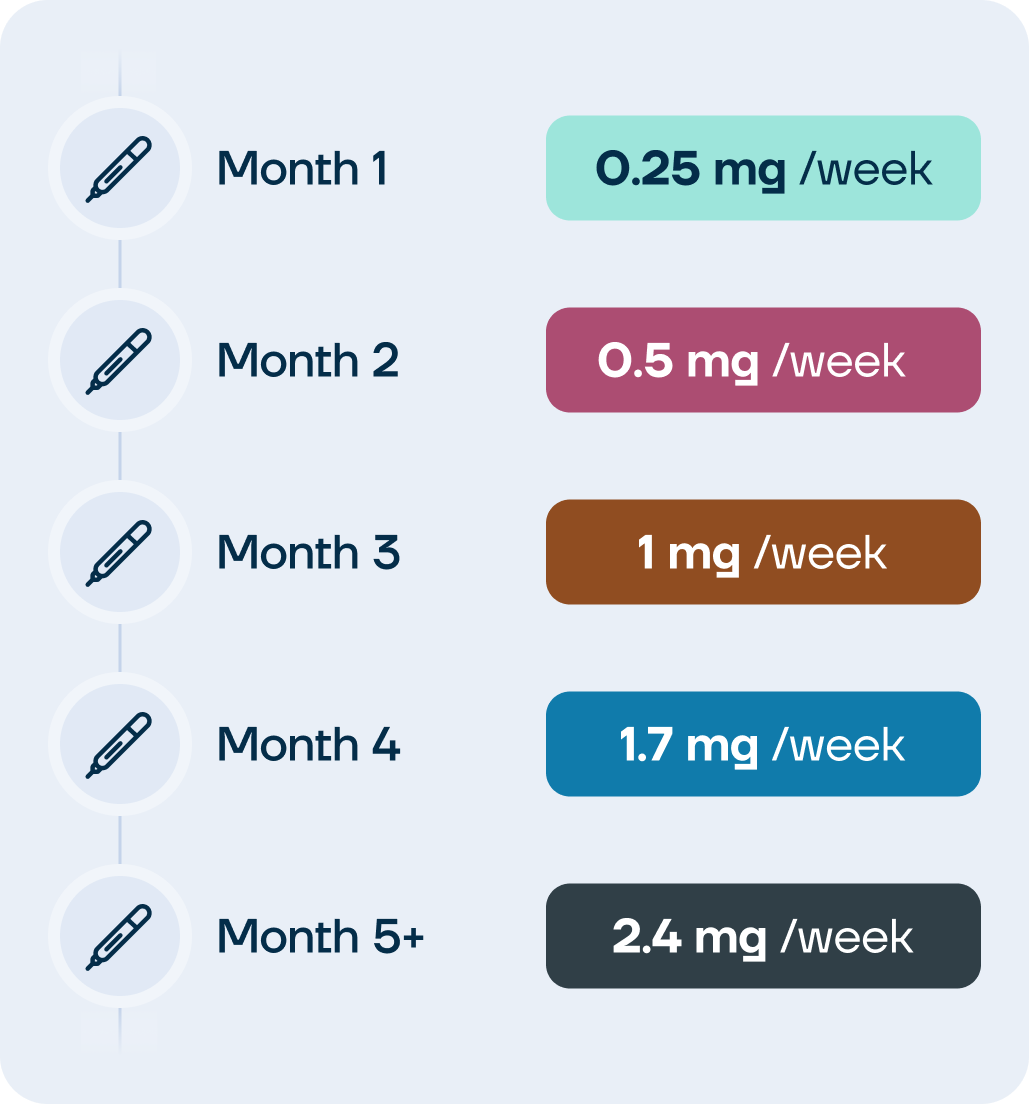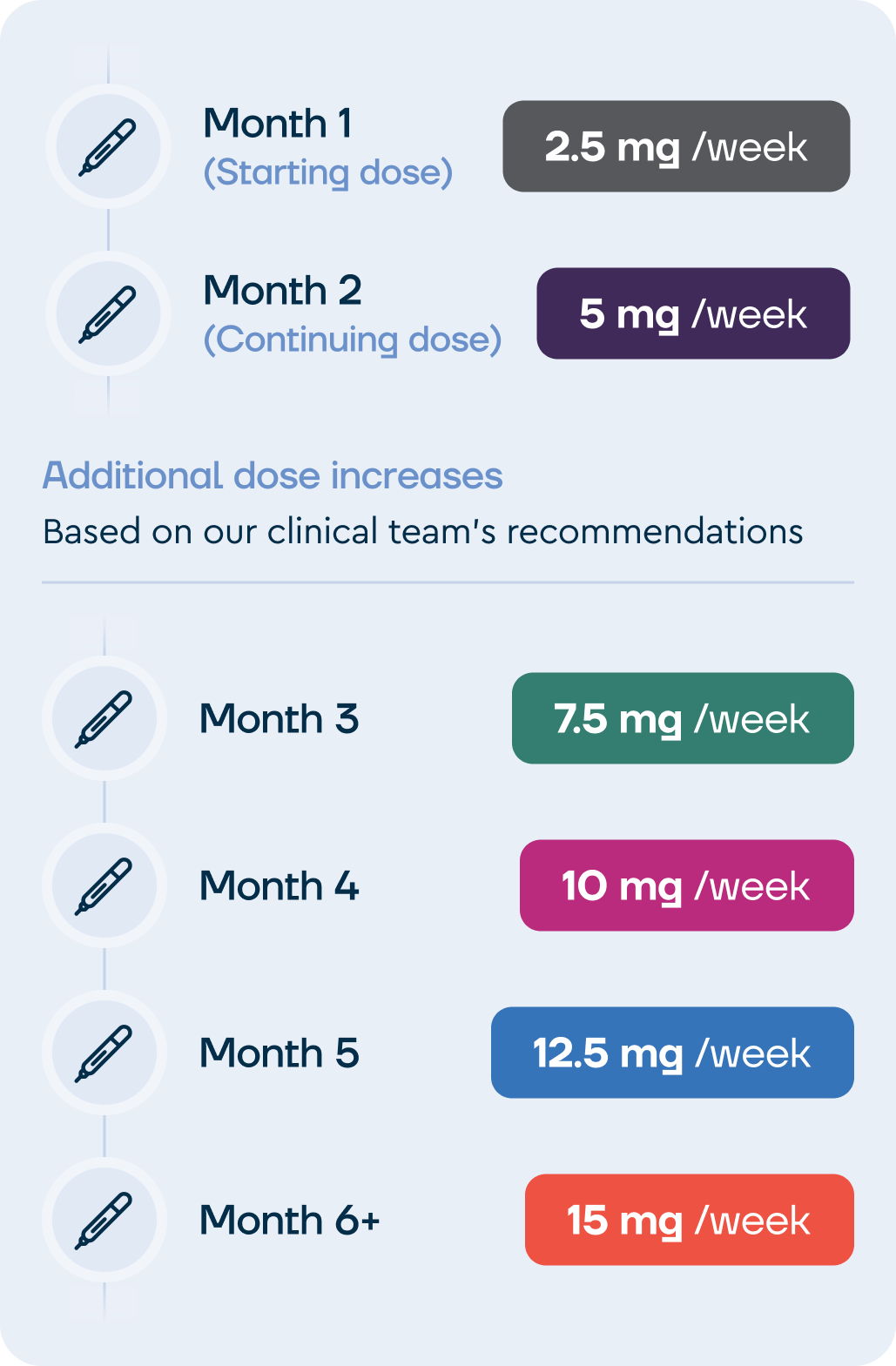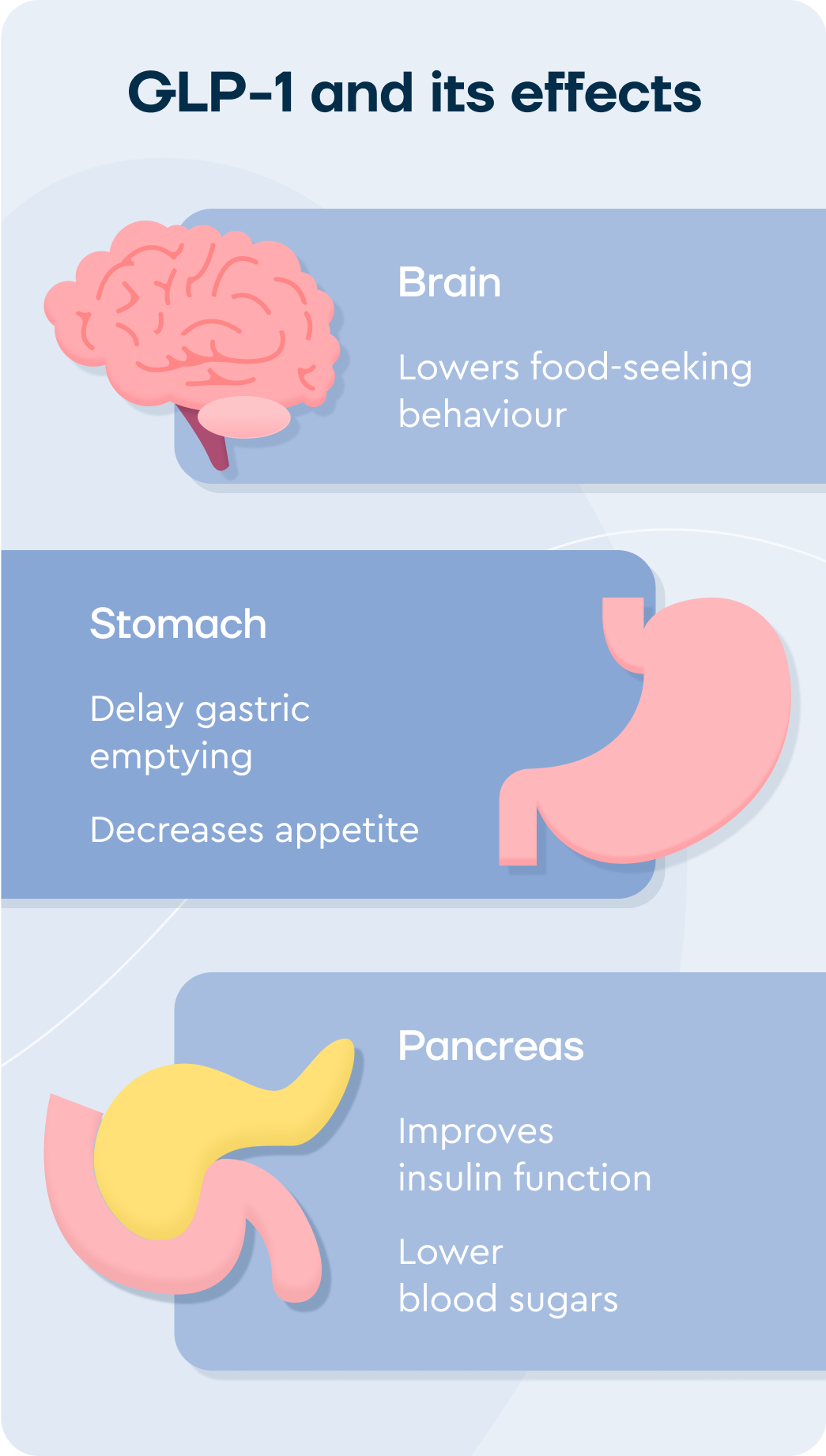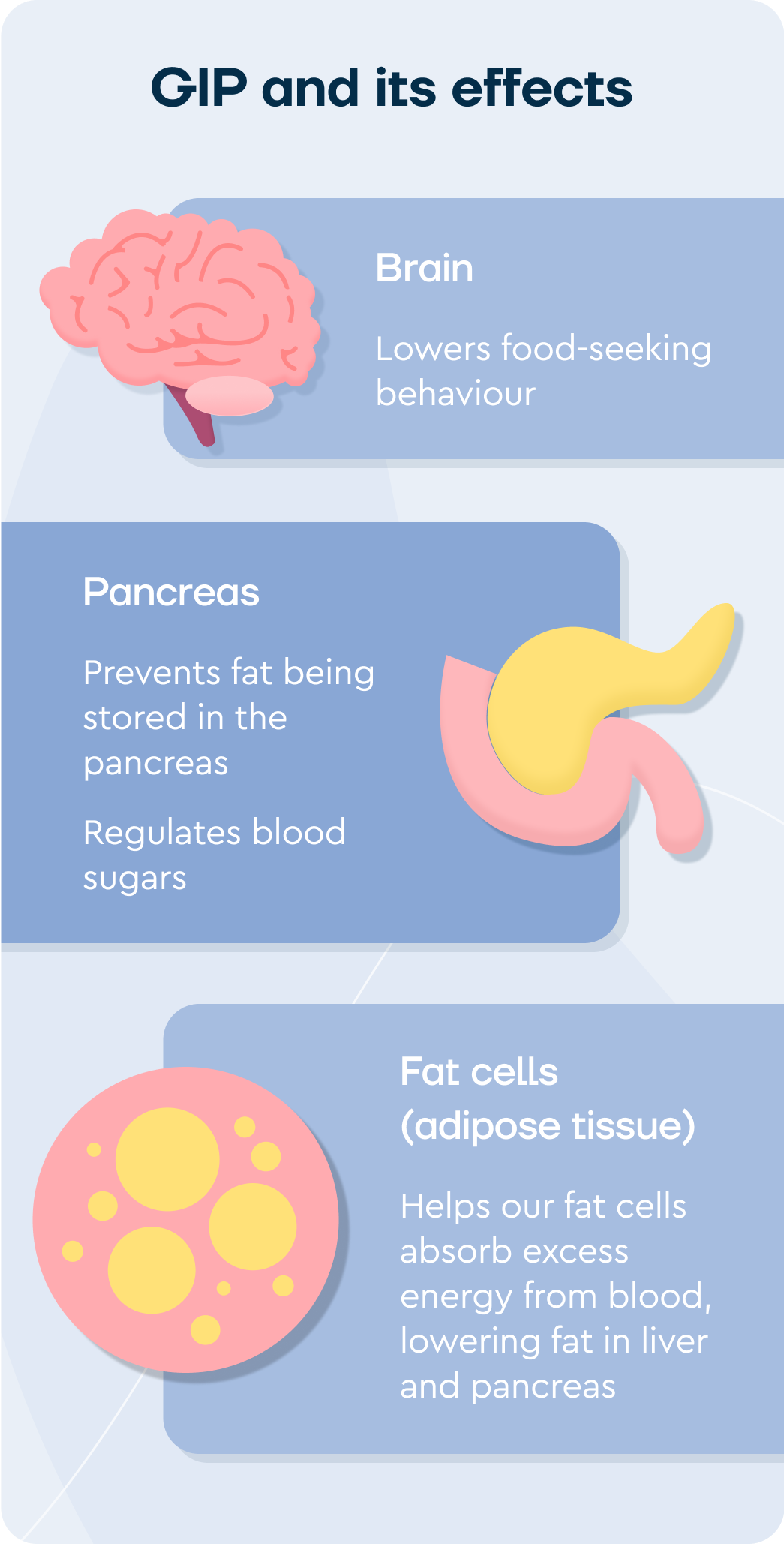Jump to: What are Mounjaro and Wegovy? | Understanding dosing schedules | How these medications work | Weight loss results compared | Making your choice | Take home message
Mounjaro leads to significantly more weight loss than Wegovy, with clinical trials showing an average weight loss of 25% after one year compared to 16% with Wegovy.
For someone weighing 100kg, this means Mounjaro could help achieve 25kg weight loss versus 16kg with Wegovy.
Both medications are approved in the UK for treating obesity and type 2 diabetes.
These medications work by enhancing your body’s natural appetite control system, with Mounjaro having an additional beneficial effect that helps explain its stronger results.
While both medications effectively reduce hunger, Mounjaro targets two of your body’s appetite-regulating hormones instead of just one.
Recent research shows both medications are generally well-tolerated by most people.
The NHS currently offers both through specialised weight management services, though specific eligibility criteria apply.
Understanding how each medication works can help you have an informed discussion with your healthcare team about which option might best suit your needs.
What are Mounjaro and Wegovy?
Think of Mounjaro (tirzepatide) and Wegovy (semaglutide) as enhanced versions of your body’s natural hunger-regulating hormones.
They’re both weekly injectable medications that help manage weight and blood sugar levels, but they work in slightly different ways.
Both medications were developed to help people who find it challenging to lose weight through lifestyle changes alone.
Eli Lilly manufactures Mounjaro, while Novo Nordisk produces Wegovy.
Understanding dosing schedules
One key difference between these medications is how flexible their dosing can be. Mounjaro offers more flexibility with dosing to find the right dose for you, while Wegovy follows a more structured path.
Here’s how Wegovy’s dosing schedule works:

And here’s Mounjaro’s dosing schedule:

With Mounjaro, you have three possible maintenance doses (5mg, 10mg, or 15mg), allowing your healthcare team to find the optimal balance between benefits and side effects for your specific needs.
How these medications work
When we eat food, our gut releases hormones that help the body regulate hunger and blood sugar levels. One of these hormones is GLP-1.
GLP-1 has three important effects in your body:
- It slows the rate of food movement from your stomach to your small intestine
- It communicates with the appetite control centre in your brain to increase satiety so you feel less hungry
- It manages the release of insulin and glucagon hormones in your body, leading to better blood sugar control
The natural GLP-1 hormone in your body lasts only a few minutes, whereas the GLP-1 drugs can last for many days. This means they can have the above effects over a more sustained period.


How Wegovy works
Wegovy is known as a GLP-1 receptor agonist as it mimics the actions of the hormone GLP-1.
The active ingredient in Wegovy is semaglutide. Semaglutide is about half as potent as the real GLP-1 hormone produced in the gut.
However, semaglutide has been developed to last longer in the blood to provide a sustained effect of lowering hunger to help people eat less and lose weight.
After 4-5 weeks on Wegovy, the semaglutide in the blood reaches a level known as its ‘steady state’. This means its levels will be consistent and stable rather than rising and falling.
How Mounjaro works
Mounjaro is also known as a GLP-1 receptor activator, as it mimics the actions of the hormone GLP-1.
The active ingredient in Mounjaro is tirzepatide. Tirzepatide is about a quarter as potent as the GLP-1 hormone produced by the gut.
However, tirzepatide has the additional function of mimicking the hormone GIP. Because of this additional action, Mounjaro is known as a dual-action GLP-1 and GIP receptor agonist.
Like Wegovy, Mounjaro is a long-acting medication. It takes 4-5 weeks for its active ingredient, tirzepatide, to reach a level in the blood we call its ‘steady state’ where its levels remain consistent and stable in the blood.
Weight loss results compared
Recent clinical data shows meaningful differences in weight loss outcomes:

Most people start seeing changes within 8-12 weeks with either medication, though individual results can vary significantly.
Making your choice
When considering which medication might be right for you, several factors deserve careful thought:
Effectiveness and response
While Mounjaro typically leads to greater average weight loss, remember that everyone’s body responds differently to medications. Some people may find better success with Wegovy despite the average statistics.
Safety considerations
Both medications are generally safe, though recent studies show Wegovy tends to have slightly fewer side effects. About 4% of people stop taking Wegovy due to side effects, compared to 6-8.5% with Mounjaro.
Practical aspects
Both medications:
- Need weekly injections
- Require refrigeration
- Include support from healthcare providers
- Are widely available across the UK
Cost and access
Both medications cost between £129-£300 monthly in the UK through providers like Second Nature. Some people may be eligible for NHS coverage through specialised weight management services.
Take home message
Research shows that both Wegovy and Mounjaro lead to significant weight loss. Both medications are also well tolerated, with over 90% of participants who start the drug can stay on it.
However, Mounjaro leads to around 10% more weight loss than Wegovy on average, so Mounjaro is the most effective weight-loss injection available in the UK right now.
Still, everyone responds differently to medications and either Wegovy or Mounjaro can support significant weight loss while you develop the healthy habits needs to maintain the weight loss in the long term.
Second Nature’s medication programme
Second Nature provides Mounjaro as part of our Mounjaro weight-loss programme.
Why should you choose Second Nature over other providers assuming you’re eligible?
For peace of mind.
Second Nature has worked with the NHS for over 6 years, providing weight-loss programmes across the UK.
While our Mounjaro weight-loss programme is private and not currently used by the NHS, we’ve built the programmes focusing on scientific evidence, patient safety, and data security.
We hope that our 6+ years of working with the NHS and building a track record of effective weight-loss results will give you peace of mind to give us a try.
Please note: We generally recommend speaking with your GP/doctor before you start taking any new medication like Mounjaro. If you do sign up for Second Nature's Mounjaro programme, then we'll also send your GP a letter to let them know you've started a medication-supported weight-loss journey.







